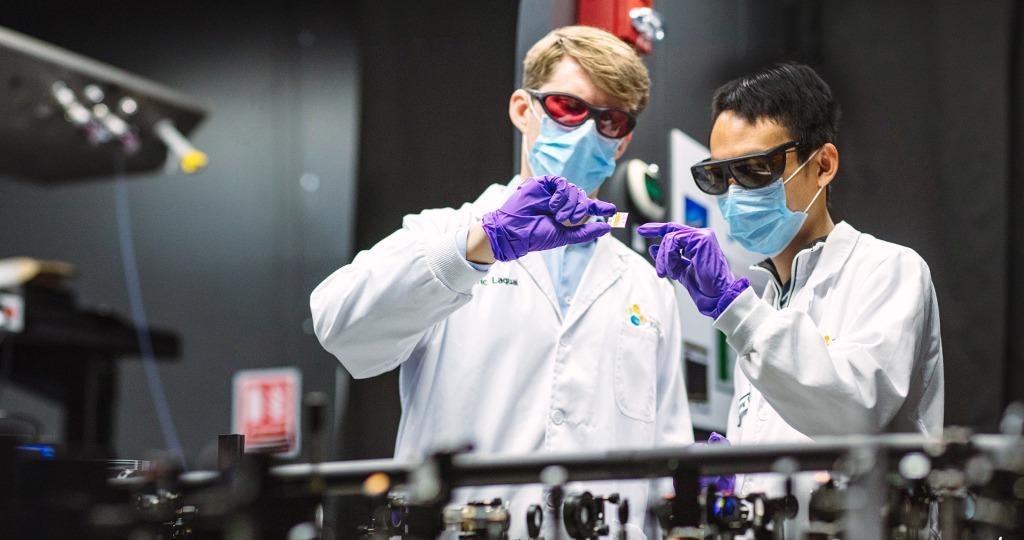According to scientists at KAUST, a complete understanding of how electrical charges operate inside perovskites could help guide attempts to enhance the effectiveness of next-generation solar cells based on such materials.
 Professor Frédéric Laquai (left) and postdoc Ming-Cong Wang study perovskite solar cells in the KAUST Solar Center. Image Credit: © 2022 KAUST; Anastasia Serin.
Professor Frédéric Laquai (left) and postdoc Ming-Cong Wang study perovskite solar cells in the KAUST Solar Center. Image Credit: © 2022 KAUST; Anastasia Serin.
When light strikes a perovskite, it stimulates negatively charged electrons inside the material’s crystalline structure, leaving away positively charged “holes.” The electrons and holes in the perovskite can then travel through it to form an electrical current. However, the charge carriers have the potential to combine instead, wasting the power they contain.
The efficiency of perovskite solar cells has been greatly improved in the past decade, but fundamental research on their photophysics is relatively backward. One of the things that are not clear is how charge carriers behave before recombining.
Ming-Cong Wang, Solar Center, King Abdullah University of Science and Technology
Solar Center was a part of the team behind this research.
Some of the ions in the crystal lattice of perovskites can assist in the localization of electrons and holes in separate locations, stopping them from recombining and extending their lifespan. However, since the charge carriers are less mobile because of this localization, the solar cell’s efficiency may suffer. Acknowledging these processes could aid researchers in fine-tuning perovskites’ composition and increasing their capacity to obtain electricity from sunlight.
The researchers looked at two characteristics of charge-carrier behavior in thin films of CsFAMA, a promising perovskite (a cesium-containing triple-cation mixed halide perovskite). They excited the charge carriers using a sequence of brief laser pulses, and then examined them a few picoseconds later.
Researchers discovered that as the density of charge carriers grows, the energy gap that electrons must cross when stimulated by incoming light narrows proportionally. According to Wang, this behavior differs from that of typical semiconductors.
The scientists next utilized terahertz radiation, a type of high-intensity microwave, to investigate how the charge carriers traveled around. This demonstrated that as charge carrier density grows, they are more likely to attach to a certain location. “Charge carriers are more localized at higher densities,” says Frédéric Laquai, who headed the team.
Both of these findings, according to the researchers, have the same basic root cause. When light strikes the perovskite, it causes minute quick distortions in the ion lattice, which change the behavior of the charge carriers. Other scientists have also noticed similar lattice fluctuations in perovskites, confirming the findings.
Illuminating perovskite photophysics
KAUST solar scientists are discovering ways to improve the performance of next-generation solar cells. Video Credit: © 2022 KAUST; Anastasia Serin.
Journal Reference:
Wang, M., et al. (2022) Photo-induced enhancement of lattice fluctuations in metal-halide perovskites. Nature Communications. doi.org/10.1038/s41467-022-28532-0.